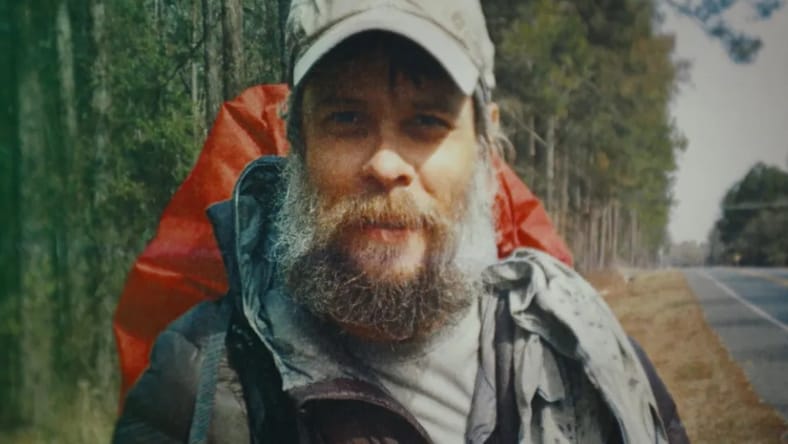
“When somebody’s wiped of their identity, it lets you read so much of yourself onto them,” director Patricia E. Gillespie said at the first annual Jackson Hole International Film Festival during the Q&A about her documentary, They Called Him Mostly Harmless.
Now streaming on Max, the wildly compelling doc is about a group of web sleuths who embark on a frenzied search to identify a mysterious hiker found dead in Florida’s Everglades in 2018. But it’s also a story about how sometimes, in seeking to understand a stranger, what we’re really doing is seeking to understand ourselves.
Found emaciated and alone in a small yellow tent without identification of any kind, but with plenty of cash and cans of food beside his body, local authorities were mystified as to who this man was and how he’d died. When they released a sketch of his face to the public, dozens of hikers came forward with stories of meeting him along the Appalachian Trail, with photos to prove it — but not one of them knew his real name. They only knew him by his trail nicknames, “Mostly Harmless” and “Denim.”
It would take two years, a viral WIRED story, thousands of devoted internet sleuths across multiple Facebook groups, and a breakthrough in DNA science to finally identify the mystery hiker. But when the true details of his life emerged, they stood in startling contrast to the heroic story that scores of internet fans had projected onto him. (We won’t reveal his name here so as not to spoil the movie).
They Called Him Mostly Harmless Reveals How the Internet Treats a Blank Canvas
During the Q&A with Gillespie and producer Ethan Goldman at JHIFF in Dec., one obvious question was raised: What was it about this guy that grabbed so many people’s interest? With so many thousands of other people going missing in the U.S. each year, including a very high number of indigenous people, why have so many resources gone towards identifying this one white man?
“I think it is unfortunate that it just happens to be a white male. He had a face and a mystery about him that people found incredibly compelling, and he’s one of those people who you just project your thoughts onto,” Goldman told the crowd.
“I think there was just this intrigue around, how could somebody go missing in the 21st century without having a digital footprint? How can you do that when we’re tracked so closely through our phones and through all of the privacy breaches?”
Also Read: A Great Divide Grapples With Anti-Asian Hate Against the Backdrop of Small-Town Wyoming
But Gillespie argued that there’s a reason for the correlation between the internet’s adoration for the mysterious hiker and the fact that he was an objectively handsome man.
“I don’t think it just happened to be a white male. I think it was very much the fact that he was good looking, on the younger side. That was exactly why it generated that much attention, because people were uncomfortable with the fact that someone like him could have ended up in the position he was in,” Gillespie said.
“It inspired this sort of immediate sympathy and interest that, come to find out, wasn’t entirely deserved,” she added. “I mean, everyone deserves to be found and reunited with their families, and his family deserved that. But that, to me, was also really interesting. I also think when somebody’s wiped of their identity, it lets you read so much of yourself onto them. So he sort of became a cipher that could be whatever people needed him to be for themselves.”
Main Image: A still from They Called Him Mostly Harmless. Credit: Max.
Editor’s Note: This story, originally posted in December, has been updated with the film’s release.
